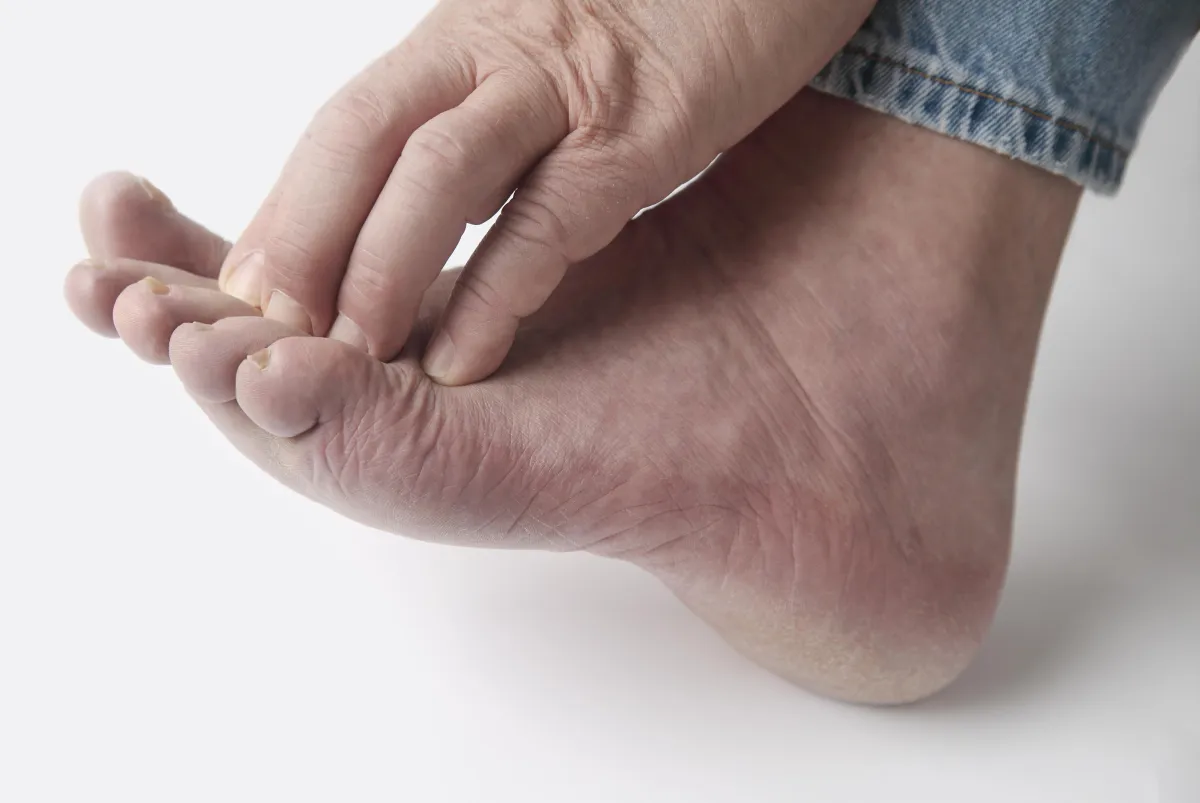
Why Are Fungal Foot Infections Difficult to Treat if Not Addressed Early?
Ignoring It Won’t Make It Go Away
That small itch between your toes or slight discolouration on a toenail might not seem like a big deal—but fungal foot infections have a way of overstaying their welcome. And the longer you wait to treat them, the harder they become to shift.
In this blog, we’ll explore why early intervention is key, what makes fungal infections so persistent, and how you can take proactive steps before they become a long-term issue.
The Hidden Nature of Fungal Infections
Fungal infections can be deceptive:
They often start mildly and progress slowly
They thrive in warm, moist, enclosed environments
Symptoms can be mistaken for dry skin, eczema, or minor trauma
By the time discomfort becomes obvious, the infection may already be well established in skin layers or nail beds.
Why They Get Harder to Treat Over Time
1. Fungus Can Penetrate Deep
Nail infections, for example, burrow beneath the nail plate, making it hard for topical treatments to reach the source.
2. Delayed Treatment = Spread
Infections can:
Spread to other nails or parts of the foot
Become bilateral (both feet)
Infect family members or cohabitants
3. The Environment Becomes Contaminated
Fungal spores can survive in shoes, socks, floors, and towels—leading to repeated reinfection.
4. Thickened Nails and Skin
As the infection worsens, nails may thicken or become distorted, reducing treatment penetration and response.
5. Treatment Resistance
Partial or incorrect treatment (e.g., stopping creams too early) can allow more resilient fungal strains to take hold.
The Cost of Waiting
Delayed care often results in:
Longer treatment periods (months instead of weeks)
Higher cost due to advanced therapies
Greater risk of complications (especially in diabetics or immunocompromised individuals)
Emotional or cosmetic distress from nail appearance
What could have been resolved with a cream might now require laser sessions, oral medication, or ongoing management.
Early Signs to Look For 👀
Catch it early by watching for:
Flaky or itchy skin between toes
Redness or burning after exercise
A white spot or streak on the nail
Discolouration or thickening of toenails
Don’t wait for it to get painful—fungal infections rarely self-resolve.
The Benefits of Early Treatment
✅ Faster Results
Topical treatments are more effective when the infection is mild and superficial.
✅ Less Likelihood of Spread
Early action limits how far the infection can go.
✅ Shorter Recovery Period
Your skin or nails can return to normal faster, with fewer sessions or prescriptions.
✅ Reduced Risk of Complications
Less damage to nail structures, fewer relapses, and improved long-term outcomes.
Effective Early Treatment Options
Antifungal creams and sprays (e.g. clotrimazole, terbinafine)
Antifungal nail lacquers for minor onychomycosis
Class IV Laser Therapy for deeper infections
Footwear and sock hygiene routines
Nail debridement for better topical penetration
Combining hygiene with early clinical intervention provides the best chance of full recovery.
Final Thoughts: Act Now, Not Later
Fungal foot infections are common—but they’re also avoidable and manageable with the right steps.
Waiting only gives the fungus more time to dig in, spread out, and make itself at home in your skin, nails, and footwear.
If you think something’s not right, trust your gut and get it checked.
👣 Book an early assessment at www.wefixfeet.co.uk or call 0115 9328832 for expert support and guidance.
Ask The We Fix Feet Team
Fill in the form to request a Call From Our Team
One of our team will call you for FREE and answer any questions or concerns you may have about your uncomfortable foot condition

Where To Find We Fix Feet
Our We Fix Feet podiatry clinics are conveniently located in Ilkeston, Derbyshire and Beeston, Nottinghamshire
Open: Mon-Fri 09:00-17:00 / Sat 09:00-13:00
94 Bath Street, Ilkeston, Derbyshire DE7 8FE
8 Wollaton Road, Beeston, Nottinghamshire NG9 2NR
Pay and display parking nearby




